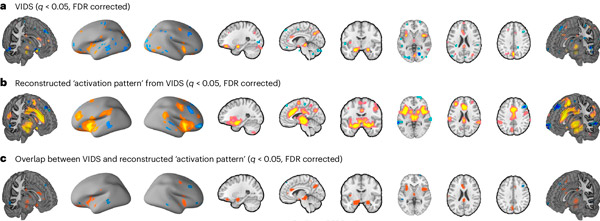New publications
The neural trace of disgust manifests itself in sensory and moral experiences
Last reviewed: 02.07.2025

All iLive content is medically reviewed or fact checked to ensure as much factual accuracy as possible.
We have strict sourcing guidelines and only link to reputable media sites, academic research institutions and, whenever possible, medically peer reviewed studies. Note that the numbers in parentheses ([1], [2], etc.) are clickable links to these studies.
If you feel that any of our content is inaccurate, out-of-date, or otherwise questionable, please select it and press Ctrl + Enter.

Disgust is one of the six basic human emotions, along with happiness, sadness, fear, anger, and surprise. Disgust typically occurs when a person perceives a sensory stimulus or situation as repulsive, unpleasant, or otherwise disgusting.
Past psychological research has defined disgust as an avoidant-defensive emotion, associating it with certain facial expressions, movements, and physiological responses. Although disgust is primarily associated with unpleasant food tastes, unpleasant odors, or the sight of repulsive images, it can also occur in response to other stimuli, including unpleasant social interactions.
Researchers from the University of Electronic Science and Technology of China and other institutions recently conducted a study aimed at better understanding the neural underpinnings of disgust and its generalization to contexts beyond food intake. Their findings, published in the journal Nature Human Behavior, suggest that the neurofunctional signature of subjective disgust is the same for oral disgust and unpleasant socio-moral experiences.
"Although disgust originates in the hard-wired mammalian aversion response, the conscious experience of disgust in humans is highly dependent on subjective appraisal and can even extend to socio-moral contexts," Xianyang Gang, Feng Zhou and colleagues write in their paper.
"In a series of studies, we combined functional magnetic resonance imaging (fMRI) with machine learning-based predictive modeling to create a comprehensive neurobiological model of subjective disgust."

Subjective disgust is associated with and predicted by distributed brain regions. a, VIDS threshold map. b, VIDS threshold-transformed 'activation' map. c, Overlay of VIDS and transformed 'activation' map. Images thresholded at q < 0.05, FDR corrected. Hot colors indicate positive weights (a) or associations (b), cool colors indicate negative weights (a) or associations (b). Source: Nature Human Behaviour (2024). DOI: 10.1038/s41562-024-01868-x
Participants in the experiment were shown various images designed to evoke feelings of disgust and asked to respond naturally to these images. After viewing each image, participants were asked to rate their level of disgust on a scale from 1 (little/no disgust) to 5 (strong disgust).
By monitoring participants’ brain activity using fMRI and analyzing the collected data using a machine learning model, the researchers were able to delineate a neural signature associated with subjective perceptions of disgust. This signature accurately predicted participants’ self-reported disgust, generalizing well to baseline disgust, taste disgust, and sociomoral responses to unfair offers in a game.
"Disgust experiences were encoded in distributed cortical and subcortical systems and showed distinctive and shared neural representations with subjective fear or negative affect in the interoceptive-emotional awareness and conscious appraisal systems, while signatures most accurately predicted the corresponding target experience," Gan, Zhou, and colleagues wrote in their paper.
"We provide a precise functional magnetic resonance imaging signature of disgust with high potential for resolving ongoing evolutionary controversies."
A recent study by Gan, Zhou, and their co-authors described a pattern of activity across the brain associated with subjective experiences of disgust. Specifically, subjective disgust was simultaneously encoded in multiple brain regions, rather than in discrete regions.
Interestingly, the researchers observed the same neural signature across the brain in a variety of situations in which people experience disgust, from tasting unpleasant food to empathizing with others in pain or receiving an unfair offer. These findings may soon pave the way for further neuroscientific research focused on the neurofunctional signature of disgust, potentially leading to exciting new discoveries.
